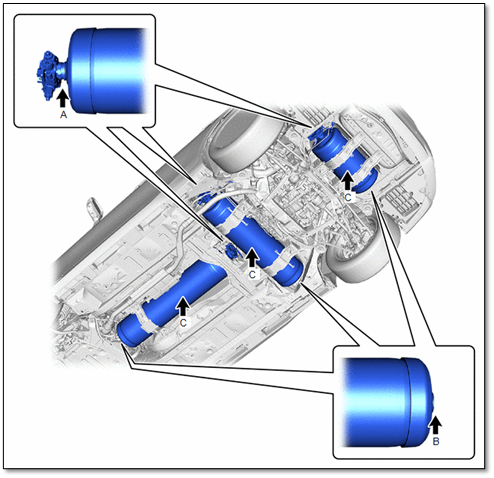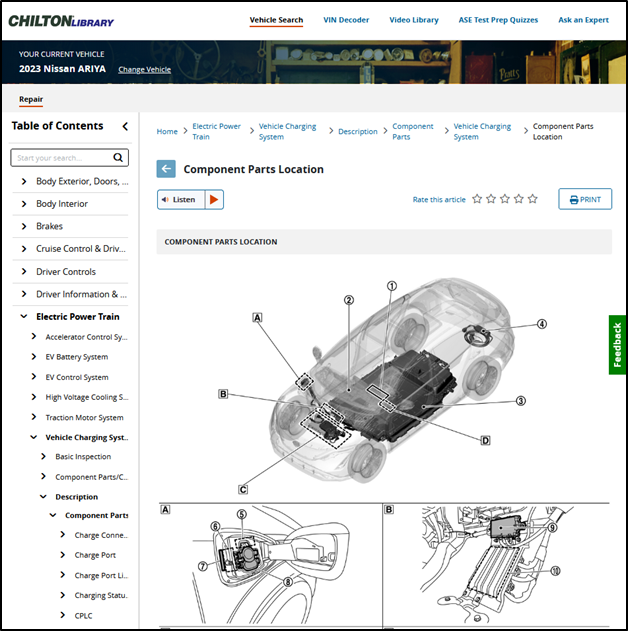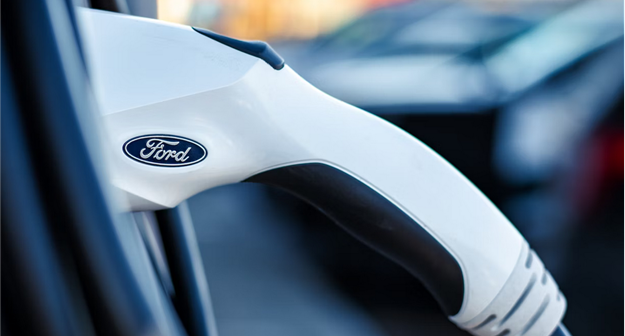| By Chilton Staff |
Recently, Ford and General Motors (GM) announced that they will begin using Tesla’s superchargers for their electric vehicles (EVs). Initially, they will use adapters to connect. Then, beginning in 2024 or 2025, Ford and GM plan to have built-in Tesla charge inlets. Several other manufacturers, such as Mercedes, Nissan, Rivian, and Volvo, are following suit. These automakers say the availability of Tesla’s chargers will address buyer concerns and will be more convenient for their customers.
To sync with different makes and models, Tesla must create new software and adapters. Additionally, there’s an issue with the placement of the charging port on the different EV models. While Tesla charging ports are standard on the driver’s side rear corner, the location of ports on other makes and models varies. For some non-Tesla EVs, the Tesla charging station cord isn’t long enough to reach the charge port, requiring awkward positioning that may block others who wish to charge.
Considering these challenges, industry analysts warn the transition may take a little longer, reminding us that it isn’t uncommon for Tesla to be late releasing new products. In a communication with the Department of Transportation, Tesla described the supercharger compatibility rollout schedule as “aggressive,” saying it “could lead to a shortfall in the number of compliant charging stations available given the pace and scale of deployment.”1 Rather than asking for extra time or exceptions from the standards, Scott Paul, president of the Alliance for American Manufacturing, urges compliance with the legislation, saying, “This is a once-in-a-lifetime shot to get this right.”1
500,000 public charging stations
Studies cite the availability of public chargers as a factor contributing to hesitancy by prospective buyers to choose electric over gas. Increasing the number of public chargers is a critical aspect of EV adoption nationwide, for both rural areas and cities. As automakers shift from gas-powered to electric vehicles, they want the number of public chargers to keep up with demand.
With a goal of decreasing carbon emissions, Congress’ Inflation Reduction Act (IRA), signed last year, includes incentives to increase the number of made-in-America electric vehicle chargers to 500,000.2 To qualify for the aid, Tesla agreed to open its proprietary network to the public.
A new era
The growth of EV charging infrastructure is reminiscent of other times in American history, such as when railroads, telephone lines, and highways were laid to support the needs of a growing nation.
The IRA is supercharging the arrival of a new era in automotive history. Days after the new law was signed, California banned the sale of gas-powered cars beginning in 2035. Several other states followed suit—including Vermont, which banned gas-powered cars even earlier, in 2030.
At the federal level, a 2021 executive order by the U.S. president requires that “light-duty vehicles acquired by the government will be emission-free by 2027,”3 with some exceptions for military and space vehicles. The days of manufacturing gas-powered vehicles are numbered.
7 major automakers form new EV charging network
Weeks after the agreement with Tesla, in July 2023, Stellantis (Chrysler), Honda, Mercedes, Hyundai, Kia, BMW, and General Motors announced an agreement to work together to build out a new charging network. It will accept both the combined charging standard connector (CCS) and Tesla’s connector (NACS). The joint venture anticipates building 30,000 stations, with the first opening by next summer. Mercedes-Benz CEO Ola Källenius commented: “The fight against climate change is the greatest challenge of our time. What we need now is speed — across political, social, and corporate boundaries. To accelerate the shift to electric vehicles, we’re in favor of anything that makes life easier for our customers.”4
ChiltonLibrary covers alternative-fueled vehicles
As major auto manufacturers pivot to alternative-fueled vehicles, ChiltonLibrary provides factory information for their maintenance, service, and repair. This includes hydrogen fuel cell, battery electric vehicles, liquefied natural gas, compressed natural gas, and hybrids.


Regardless of the type of fuel, whether electric, hydrogen fuel cell, natural gas, diesel, or gasoline, ChiltonLibrary is a better knowledge base for making smart vehicle-ownership decisions.
1. Renshaw, Jarrett, and Jin Hyunjoo, “New Biden EV Charger Rules Stress Made in America, Force Tesla Changes,” Reuters, February 15, 2023.
2. The White House, “Fact Sheet: Biden-Harris Administration Announces New Standards and Major Progress for a Made-in-America National Network of Electric Vehicle Chargers,” February 15, 2023.
3. Shepardson, David, and Ben Klayman, “U.S. Government to End Gas-Powered Vehicle Purchases by 2035 under Biden Order,” Reuters, December 8, 2021.
4. “Seven Automakers Unite to Create a Leading High-Powered Charging Network Across America” Stellantis Press Release, July 26, 2023.


